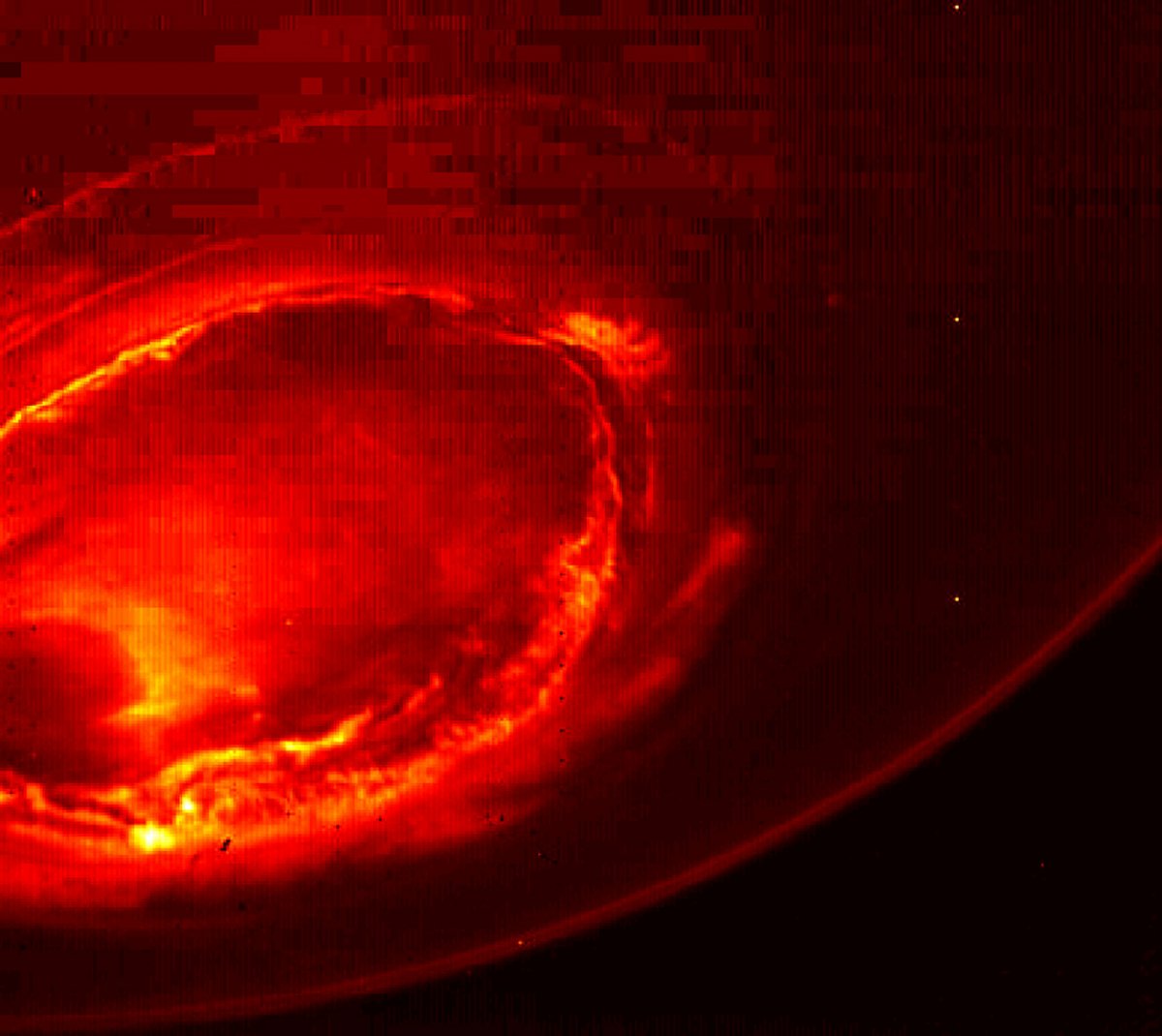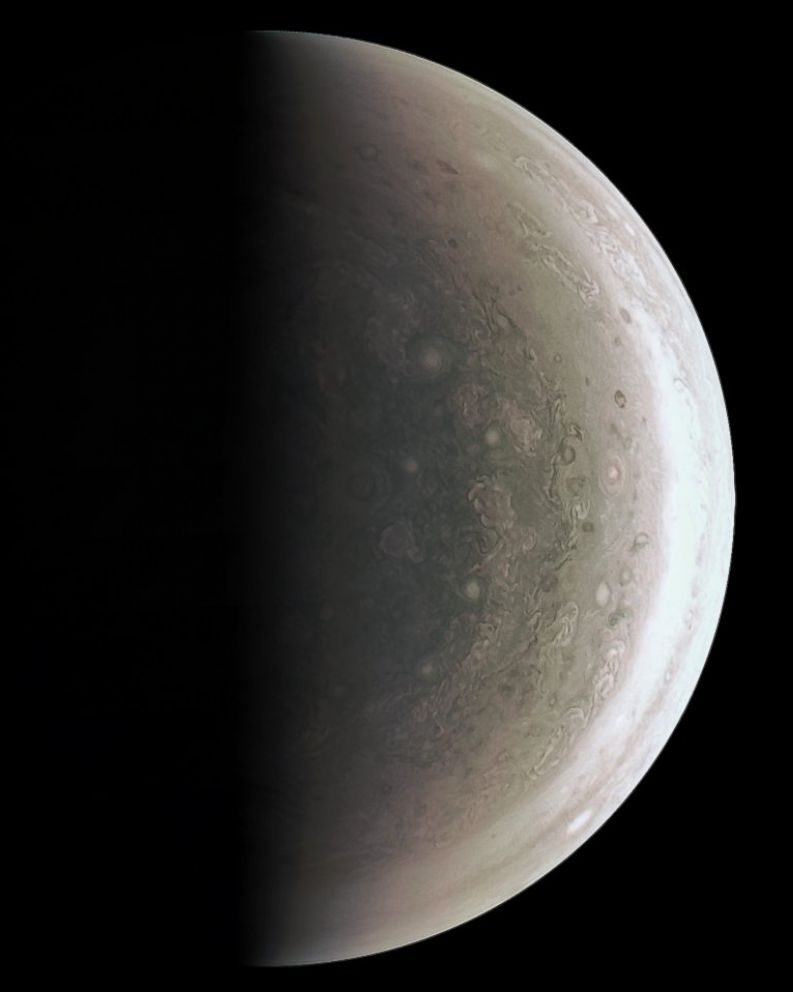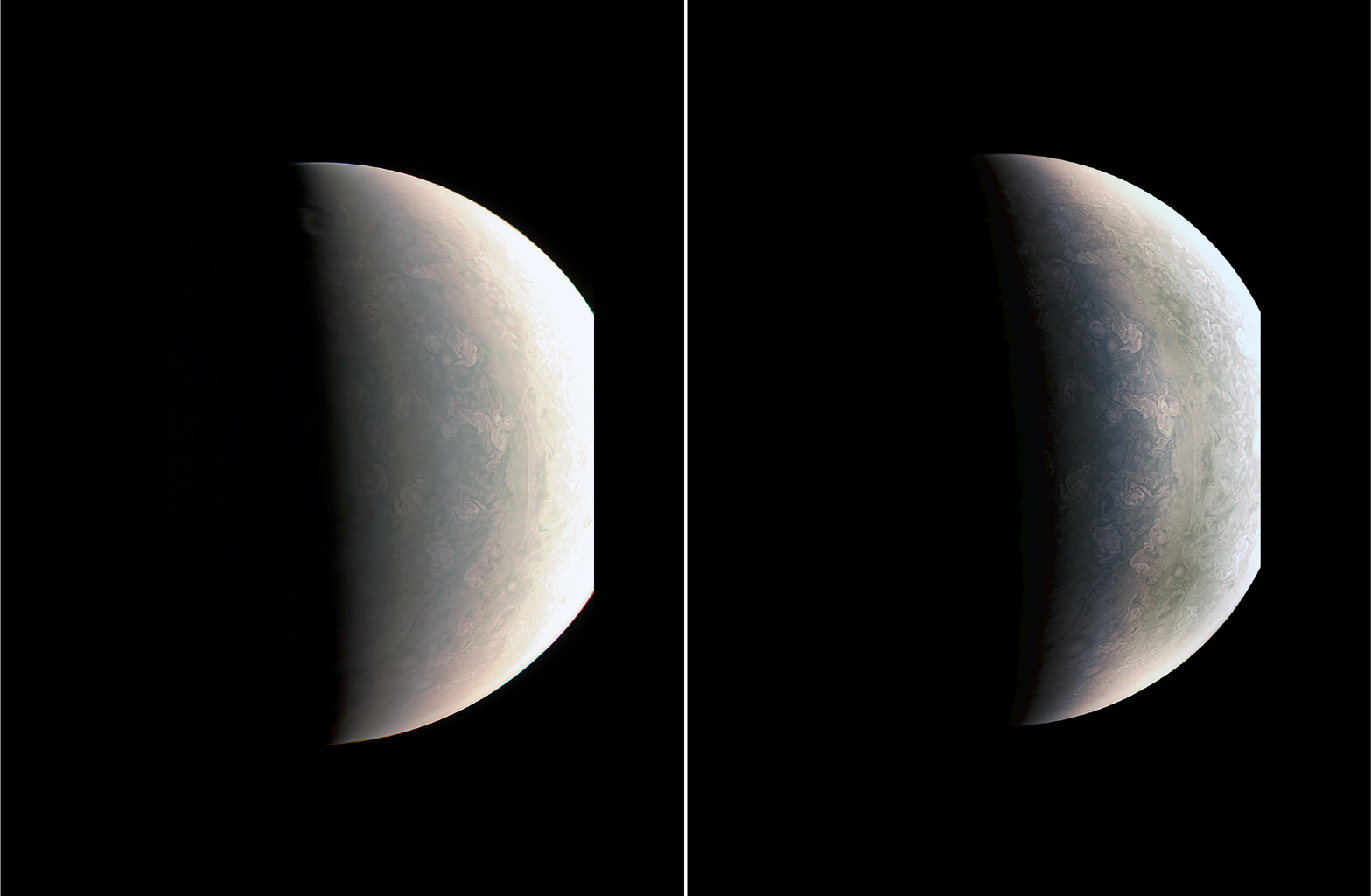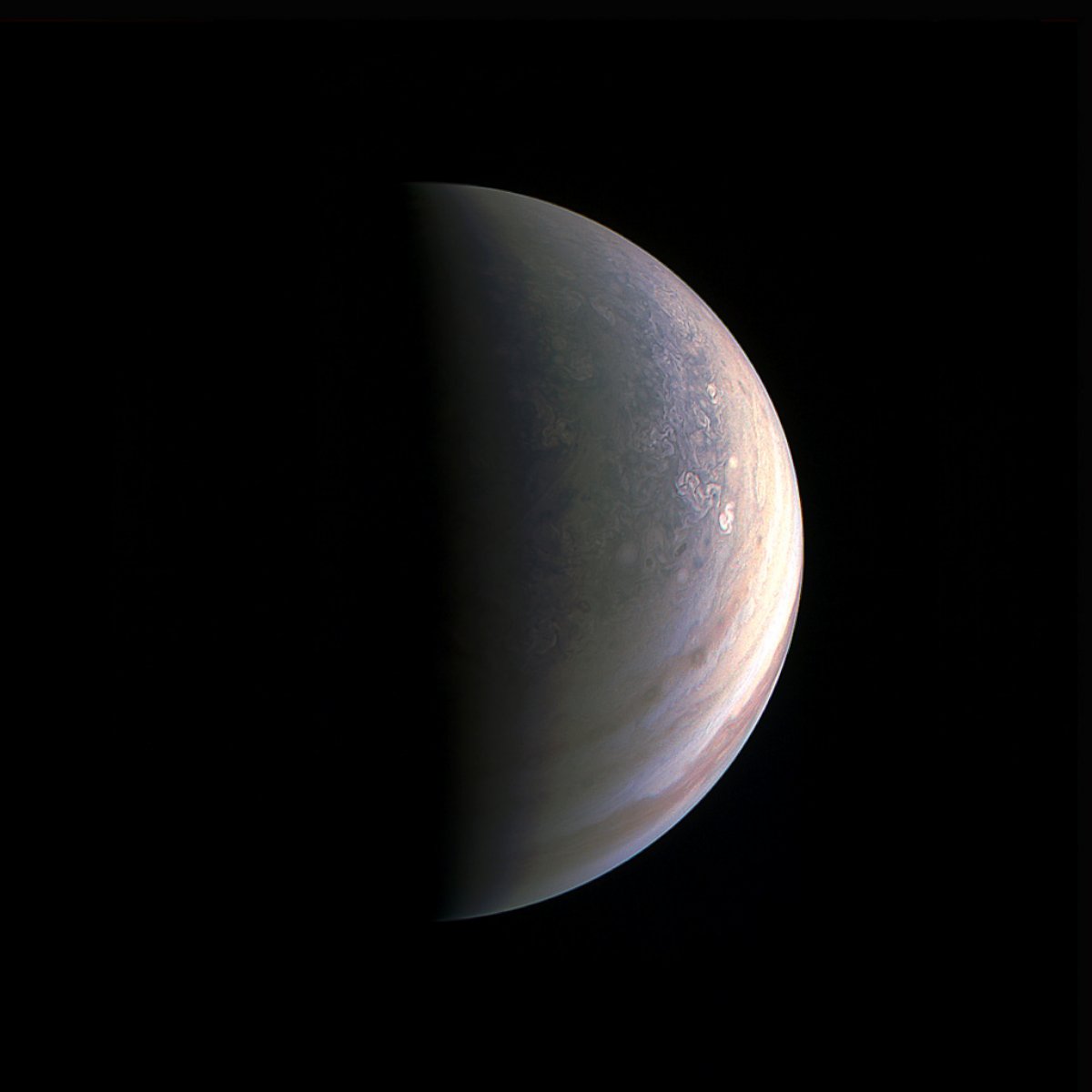Juno Probe's First Glimpse of Jupiter's North Pole 'Like Nothing We Have Seen Before'
NASA's Juno probe sent back images of Jupiter's north pole.
— -- For the first time, human beings are getting a look at Jupiter's north pole.
NASA's Juno spacecraft flicked on its cameras as it orbited our giant neighbor as close as 2,500 miles from the planet on Aug. 27, according to the space agency, which unveiled the images today.
The result? Just 6 megabytes of imagery data that took a day and a half to download.
But that small package contained views of Jupiter's north pole, which, one scientist said, "looks like nothing we have seen or imagined before."
“It’s bluer in color up there than other parts of the planet, and there are a lot of storms," said Scott Bolton, the principal investigator of Juno. "This image is hardly recognizable as Jupiter."
The spacecraft will conduct 35 more flybys, NASA said.



